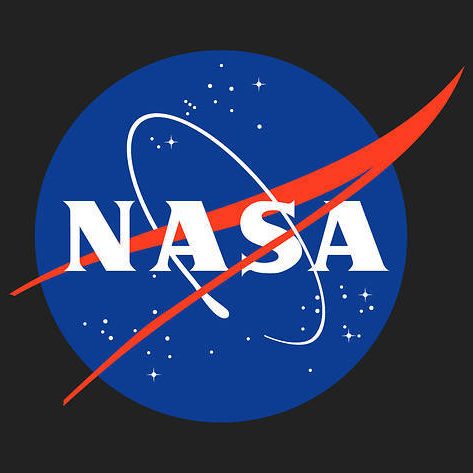Water and Energy Cycle
The Water and Energy Cycle Focus Area aims to develop capabilities to improve observations, model simulations and projections of the water and energy cycles at diverse spatial scales (local, regional, global) including extreme events. This scope aligns with research initiatives at other national and international programs, such as the Global Energy and Water cycle Experiment (GEWEX) and the water cycle activities of the U.S. Climate Change Science Program.
In brief, the Water and Energy Cycle Focus Area seeks to enhance our understanding of the transfer and storage of water and energy in the Earth system. For the water cycle, the emphasis is on atmospheric and terrestrial stores, including seasonal snow cover. Permanent snow and ice, as well as ocean dynamics are studied within the Climate Variability and Change Focus Area. The Water and Energy Cycle Focus Area aims to resolve all fluxes of water and the corresponding energy fluxes involved with the water changing phase. Understanding, observing, and modeling clouds and their interaction with energy fluxes is accomplished in collaboration with three other Focus Areas (Atmospheric Composition, Climate, and Weather).
Research Questions
Water & Energy Cycle addresses the following overarching questions:
- How will water cycle dynamics change in the future?
- How are global precipitation, evaporation, and the cycling of water changing?
- What are the effects of clouds and surface hydrologic processes on Earth’s climate?
- How are variations in local weather, precipitation, and water resources related to global climate variation?
Research Programs
NASA Energy and Water cycle Study (NEWS)
In 2003, NASA established the NASA Energy and Water cycle Study (NEWS), whose ultimate goal is a breakthrough improvement in the nation’s energy and water cycle prediction capability. NEWS is expected to demonstrate advanced global observation, data assimilation, and improved representation of physical processes in climate models, better prediction systems to more effectively quantify the hydrologic consequences of climate change and produce useful seasonal and longer-range hydrologic predictions based on observed initial values and changing boundary conditions.
Terrestrial Hydrology
The Terrestrial Hydrology program (THP) uses NASA’s unique view from space to investigate hydrologic processes linked with runoff, land-atmosphere coupling, and storage of terrestrial water. Its principal objective isto understand the role of water in enhancing the predicting skill in land-atmosphere interactions and to develop new observational basis for water resources management. THP promotes the development of hydrologic remote sensing theory, new hydrologic satellite missions, hydrologic remote sensing field experiments, and the interface of hydrology with other disciplines, such as ecology or modeling. Particular emphasis is placed on the application of satellite-based, remotely sensed data for characterizing, understanding, and predicting the terrestrially linked components of the hydrologic cycle and the dynamics of large-scale river basins.
Associated Earth Science Division Missions, Instruments, and Data Sets
The table below lists all Earth missions that are relevant to the Water and Energy Cycle Focus Area in all phases.
Operating missions include missions at the start of the Operations and Sustainment phase of their life-cycle.This phase marks the transition from system development and acquisition activities to primarily systems operations and sustainment activities. Missions under development are missions that are at the Final Design and Fabrication (Phase C) and System Assembly, Integration and Test, and Launch (Phase D) phases of their life-cycle. The primary activities in this category are developmental in nature, including acquisition contract execution. Phase C includes: the completion of final system design and fabrication of test and flight architecture; qualification testing; development of detailed integration plans and procedures; and test of components, assemblies, and subsystems. Phase D entails: system assembly, integration, and test (AI&T); verification/ certification; prelaunch activities; system launch; and completion of on orbit checkout or initial operations. Under study missions include missions that are at the pre-formulation and formulation stages of their life-cycle. Pre-formulation begins the process to define a viable and affordable concept for new NASA programs and projects, via concept studies. This step is followed by the formulation stage, which consists of two sequential phases, the Concept & Technology Development phase and the Preliminary Design & Technology Completion phase. The primary activities in these phases are to develop and define the project requirements and cost/schedule basis, and to design a plan for implementation (including an acquisition strategy, contractor selection, and long-lead procurement). Past missions are missions that have reached the Closeout phase, during which project systems are taken out of service and safely disposed, although scientific and other analyses might still continue under project funding.
Operations:
Satellite Missions
–GRACE
–AURA (TES)
–SMAP
–GPM
–LandSAT 8
–GCOM-W1
Suborbital Investigations:
Instruments
–ASO
–PALS
–P-band radar (AirMOSS)
–SLAP
–AirSWOT
Suborbital Investigations:
Aircraft Missions
–SMAPVEX 2015
DEVELOPMENT
Satellite Missions
–GRACE -FO
UNDER STUDY
Satellite Missions
–SWOT
PAST
Satellite Missions
–AQUARIUS
–AQUA (AMSR-E)
–TRMM
–SSMI
–SMMR
ROSES Solicitations
For solicited program elements relevant to Water & Energy Cycle, search for and view open, closed, and future Research Opportunities in Space and Earth Sciences (ROSES) NASA Research Announcements (NRAs) on the NASA Solicitation and Proposal Integrated Review and Evaluation System (NSPIRES) website.
Here is a list of 2015 solicited program elements:
- A.21 NASA Energy and Water Cycle Study
- A.20 Terrestrial Hydrology
- A.22 Science Utilization of the Soil Moisture Active-Passive Mission
NASA Distributed Active Archive Center (DAAC)
Relevant Sites
Topics relevant to Water & Energy Cycle are also being pursued through the following:
NASA Applied Sciences Programs
Current
Future
NASA Center Organizations
- Goddard Space Flight Center Atmospheric Sciences Program
- Hydrospheric and Biospheric research
- Goddard Institute for Space Studies
- Langley Science Directorate
- Marshall Global Hydrology and Climate Center
- Jet Propulsion Laboratory Earth Atmospheric Sciences Section
Interagency / International Activities
- The Global Water and Energy Exchanges Project (GEWEX)
- National Science and Technology Council Committee on Environment, Natural Resources, and Sustainability (CENRS)
- Subcommittee on Water Availability & Quality (SWAQ)
- Committee on Earth Observation Satellites (CEOS)
Program Manager
Jared Entin
NASA Energy and Water Cycle Focus Area
Terrestrial Hydrology Program



























